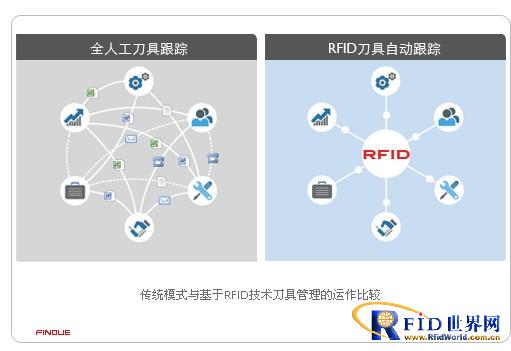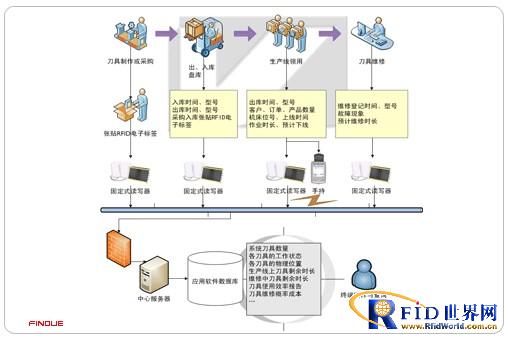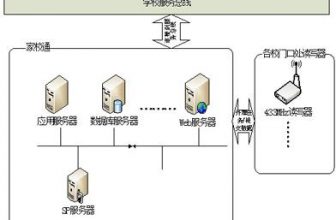
RFID tool management application program
[ad_1]
introduction
All kinds of processing tools are one of the important resources that must be invested in the normal operation of the manufacturing system. Especially for mechanical production enterprises, there are a large number of auxiliary production resources such as tools, fixtures and measuring tools. Is the management of these auxiliary tools scientific? It has an important impact on the efficient use of processing equipment in manufacturing enterprises, and determines the reliability of the manufacturing execution system and the level of production efficiency. In the traditional manual tool management mode, the tool preparation plan and the production plan are disconnected, and there are situations when the tool is stopped and waited for the tool. Appears: The use and wear of the tools cannot be accurately grasped, which is not conducive to the prediction of tool purchase (production).
Now, more and more manufacturing companies are trying to improve the management of tools, explore new tool management models or management methods, and try to greatly improve the performance and life of tools through effective tool management, reduce manufacturing costs, and increase productivity and Processing quality. With the continuous development of information technology, manufacturing companies have begun to use information management systems to realize the entire life cycle management of tool planning, purchasing, tracking, monitoring, and scheduling. In the process of tool management, tool identification is an unavoidable problem. Especially in inventory management, there are many types of tools, huge quantities, and frequent warehousing operations. If there is no effective and reliable identification technology, inventory management can easily fall into chaos.
The identification of traditional tool management mainly relies on barcode, lettering or code disk on the tool holder to identify, manually enter information, and track, measure, and record the tool. With the improvement of processing efficiency and automation and more frequent tool changes, this traditional method of manually tracking tool information has been difficult to meet the current processing requirements for tool information. Therefore, the tool itself or the tool user needs an automated tool identification system, and the tool RFID electronic tag came into being. The meaning is to identify and monitor the tools to ensure that there are suitable tools in the machining process.

System functions
RFID tool management system passedRFIDTechnology to realize the
Working status: standby status, maintenance status, in use status
Physical location: mold repair room, warehouse, workshop, production line
The main components of the system
RFID electronic label
RFID tag issuer
RFID fixed reader
RFID channel reading system
RFID handheld reader
Yapu RFID Middleware
Energetics ™ RFID Tool Management System
system design
The system is equipped with RFID readers in every physical location (maintenance room, warehouse, workshop, production line). When a tool with an RFID tag moves to this area, the RFID tag is read through the reader and the tool is updated in time. Status and physical location to the user system.

Tool registration: Each set of new tools is sent to the warehouse with an RFID tag, and the tag ID is bound to the tool’s detailed information through the RFID tag issuer, such as name, model, warehouse location, etc., information-based recording location Instead of the original manual recording, you can choose to print out a self-adhesive label and post it on the surface of the RFID electronic label for visual verification;
Machine tool equipment number: Install a fixed reader on each working machine tool. Each reader has a number and is bound to the machine position. Each time the reader reads the tool tag, the tool position status will be updated in the database ;
Tool out of library: a set of RFID channel reading system is installed at the door of the tool storeroom. When the tool passes the door, the reader reads the tool tag, and identifies “out of library” in the database corresponding to the tag or chooses to manually click on the screen to confirm the status;
Tool on the machine: Before the tool is on the machine, read the electronic tag of the tool through the reader on the machine tool, and write the reader number (that is, the machine position information) in the database corresponding to the tag. If you query a tool, you can directly Enter the tool number in the system to see where the tool is, what it is doing, when to start working, and it is accurate to each machine tool; or you can choose to use an RFID handheld reader to read the tool RFID tag information, and use the handheld to read The tool status is updated to the application system;
Disconnect the tool: After the tool is finished working, scan the electronic label with the reader, and the system will mark “work completed” in the database corresponding to the label or choose to manually click on the screen to confirm the status;
Tool returning to the library: When the tool enters the library through the door, the tag is read through the RFID channel reading system, and the system will mark “Inventory” in the database corresponding to the tag or choose to manually click on the screen to confirm the status.
Tool maintenance: If the offline tool is damaged and needs to be repaired, when entering the entrance of the repair room, the tag will be read by the RFID channel reading system, and the staff will be prompted to enter the necessary repair information and the estimated repair time.
Tool storage: The staff can use the handheld reader to regularly stock the tool, read the tool label information at close range, and compare it with the back-end management system, and manually check whether the variety and quantity of the tools in the location are consistent with the back-end system. If they are inconsistent, the system information can be corrected on site. This inventory method can shorten the enterprise inventory time by 85%, greatly improve work efficiency, and at the same time increase the inventory cycle.
[ad_2]






